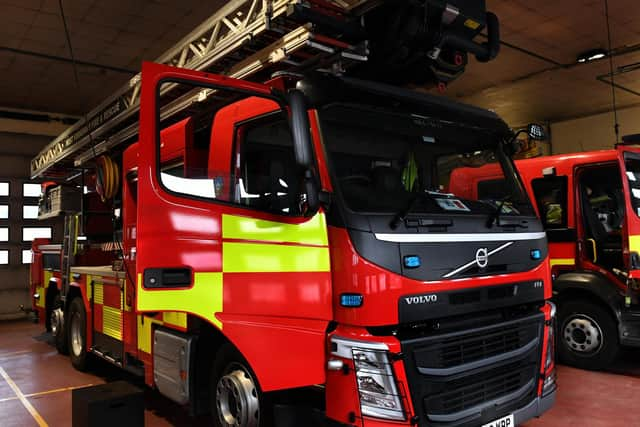Fire service shake up planned for North Yorkshire sees a station scaled back and reduced cover
and live on Freeview channel 276
North Yorkshire Police, Fire and Crime Commissioner Zoë Metcalfe has launched a three-month public consultation on the plans that will generate savings of £1.5m a year from 2025/2026 – yet insists they are not cost-cutting measures.
They are detailed within the Risk and Resource Model 2022-2025, which sets out how the service will deploy people, equipment and resources over the next three years.
Advertisement
Hide AdAdvertisement
Hide AdIt was drawn up based on a risk assessment for North Yorkshire and York indentifying the likelihood and severity of fires, road traffic collisions, water related incidents and other emergencies.


Four main areas are outlined for change which, firstly, will see on-call firefighters called upon to do fire safety and prevention work and, secondly, a reduced response to automatic fire alarms whereby the fire service will not respond between 7am and 7pm, unless the building is used for sleeping, and may send an officer in a car rather than a fire engine.
A third key change will see Huntington fire station down-graded from a full-time station to on-call and its aerial ladder platform moved to York.
The document, open to public consultation until August 14, also says full-time firefighters affected by changes will be redeployed to other roles including fire prevention work.
Advertisement
Hide AdAdvertisement
Hide AdMs Metcalfe says fire-related incidents are now a small proportion of what the service does and more prevention will stop harm happening in the first place while Harrogate and Scarborough has higher demand for services during daytime hours while in York resource outstrips risk.
She added: “The role of a fire and rescue service has changed and continues to change, with only 26 per cent of incidents last year relating to a fire emergency. We want to ensure we are addressing our current and future challenges, have the capacity to prevent and protect to stop incidents happening in the first place and prevent harm before it can take place, while also having the capacity to respond to emergencies when they do take place. We are confident these proposals would do that.
“Inevitably, there are some areas where the set up of the service would change but I’m confident the right people, right equipment and the right support would continue to be available to everyone.”
The Fire Brigades Union has been approached for comment.
North Yorkshire Fire and Rescue stats
North Yorkshire Fire and Rescue Service currently employs 700 people across the county made up of 313 full-time firefighters, 323 on-call firefighters, 20 control room staff and 91 support staff.
Advertisement
Hide AdAdvertisement
Hide AdThere are 38 stations and 46 fire engines across the county.
The North Yorkshire and York Fire and Rescue Service area is one of the largest in England covering more than 3,200 square miles and 6,000 miles of road.
Crews attend more than 6,000 emergency incidents each year, including fires in buildings and in the open, complex rescue incidents involving road traffic collisions, hazardous materials, building collapses and people in water.

